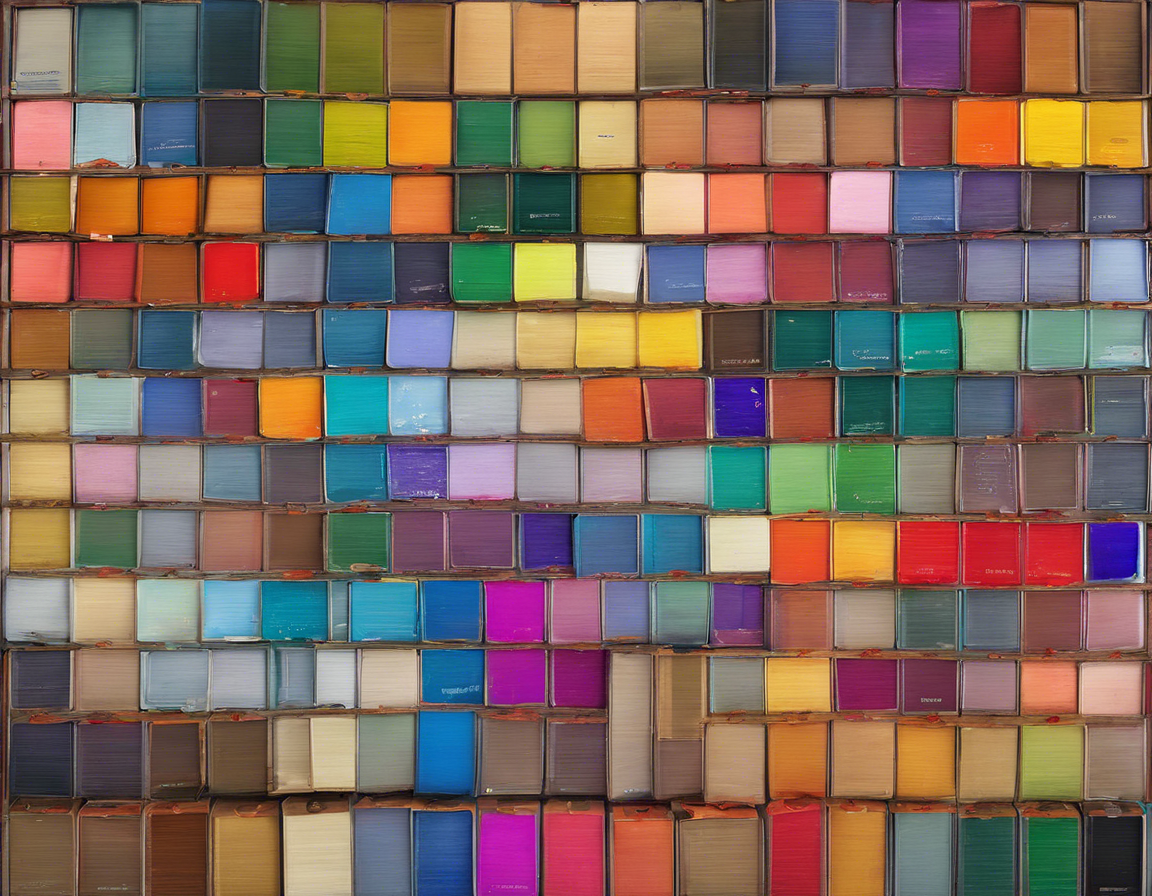Introduction
Colors play a significant role in our lives, impacting our emotions, perceptions, and even behaviors. The world is full of vibrant hues, each with its own unique name and symbolism. In this blog post, we will delve into the world of colors, exploring their names, meanings, and the cultural significance attached to them.
Primary Colors
The primary colors are red, blue, and yellow. They are called “primary” because they cannot be created by mixing other colors together. These colors serve as the foundation for creating all other colors and are often associated with different meanings and emotions.
-
Red: Associated with energy, passion, and power, red is a color that demands attention. It can evoke feelings of love and warmth, as well as anger and intensity.
-
Blue: Symbolizing calmness, trust, and stability, blue is often used to convey a sense of peace and tranquility. It is also associated with intelligence and wisdom.
-
Yellow: A vibrant and cheerful color, yellow is often linked to happiness, positivity, and energy. It can also represent creativity and optimism.
Secondary Colors
Secondary colors are created by mixing two primary colors together. Some common secondary colors include orange (red + yellow), green (yellow + blue), and purple (blue + red). Each of these colors has its own unique traits and meanings.
-
Orange: Combining the energy of red and the happiness of yellow, orange is a color that exudes warmth and excitement. It is often associated with enthusiasm and creativity.
-
Green: Symbolizing growth, harmony, and nature, green is a color that represents balance and renewal. It can also evoke feelings of freshness and prosperity.
-
Purple: Linked to royalty, luxury, and spirituality, purple is a color often associated with creativity and imagination. It can also convey a sense of mystery and magic.
Neutral Colors
Neutral colors such as white, black, gray, and brown are often considered versatile and timeless. While they may not be as bold as primary or secondary colors, neutral colors play a crucial role in design and fashion.
-
White: Symbolizing purity, innocence, and cleanliness, white is a color often associated with simplicity and clarity. It can also represent new beginnings and a fresh start.
-
Black: Representing sophistication, elegance, and power, black is a color that exudes a sense of mystery and authority. It is often used to convey a sense of strength and mystery.
-
Gray: A color that lies between black and white, gray symbolizes balance, neutrality, and composure. It is often seen as a practical and timeless color choice.
-
Brown: Associated with nature, earthiness, and reliability, brown is a color that evokes a sense of warmth and stability. It can also convey a sense of comfort and security.
Cultural Significance
Colors hold different meanings and symbolism across various cultures and societies. For example, red is often associated with luck and prosperity in Chinese culture, while it can symbolize danger in Western cultures. Similarly, white is a color of mourning in many Asian countries, whereas it symbolizes purity in Western cultures. Understanding the cultural significance of colors can help us navigate and respect diverse traditions and beliefs.
Color Psychology
Color psychology is the study of how colors can impact human behavior and emotions. Different colors can evoke different reactions and responses from individuals. For example,
- Red is often used to stimulate appetite (think of fast-food restaurants) and create a sense of urgency.
- Blue is known to have a calming effect and is often used to promote trust and reliability.
- Yellow can grab attention and create a sense of enthusiasm and optimism.
- Green is associated with nature and can have a soothing and refreshing effect.
- Purple is often linked to luxury and creativity, making it a popular choice in marketing and branding.
Understanding color psychology can help businesses and individuals make informed decisions when it comes to branding, marketing, and design.
Color Naming and Variations
Colors come in a wide range of shades and variations, each with its own unique name and identity. For example, pink is a lighter shade of red, while teal is a mix of blue and green. Some colors even have specific names based on their hue, such as magenta, turquoise, and maroon. Exploring the diverse range of color names can be both fascinating and inspiring, allowing us to appreciate the intricate nuances of the visual spectrum.
Frequently Asked Questions (FAQs)
- What is the symbolism behind the color yellow**?
Yellow is often associated with happiness, positivity, and energy. It can evoke feelings of optimism, creativity, and warmth.
- Why is red** considered a powerful color?
Red is often associated with energy, passion, and intensity. It can grab attention and evoke strong emotions such as love, anger, and excitement.
- **How do colors impact our emotions?
Colors can have a profound impact on our emotions, with different hues evoking varied responses. For example, warm colors like red and orange can create a sense of energy and urgency, while cool colors like blue and green can promote calmness and relaxation.
- What is the significance of black** in different cultures?
Black is often associated with sophistication, elegance, and power in many cultures. It can also symbolize mystery, authority, and strength.
- **How can businesses utilize color psychology in their branding?
Businesses can use color psychology to evoke specific emotions and responses from consumers. By understanding the impact of different colors, companies can create branding strategies that resonate with their target audience and convey the desired message effectively.
